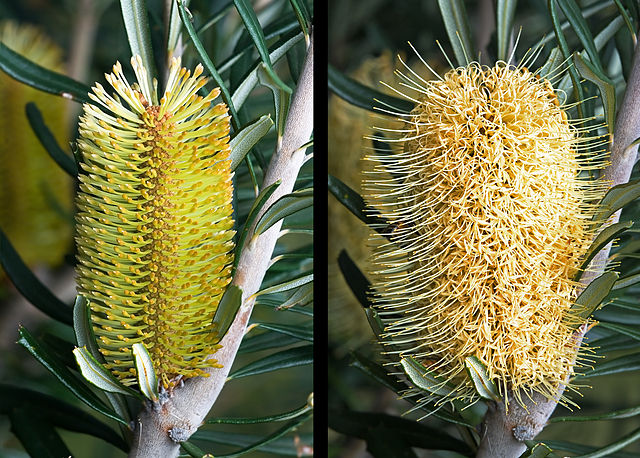Banksia sphaerocarpa, commonly known as the fox banksia or round-fruit banksia, is a species of shrub or tree in the plant genus Banksia. It is generally encountered as a 1–2 m (3.3–6.6 ft) high shrub, and is usually smaller in the north of its range. This species has narrow green leaves, and brownish, orange or yellow round flower spikes which may be seen from January to July. It is widely distributed across the southwest of Western Australia, growing exclusively in sandy soils. It is usually the dominant plant in scrubland or low woodland. It is pollinated by, and is a food source for, birds, mammals, and insects.
Banksia sphaerocarpa
The roundness of the infructescences is the source of both the common and scientific names of B. sphaerocarpa.
var. caesia, North Karlgarin Nature Reserve, highlighting fine bluish-grey foliage
var. caesia Bendering Reserve
Banksia is a genus of around 170 species of flowering plants in the family Proteaceae. These Australian wildflowers and popular garden plants are easily recognised by their characteristic flower spikes, and woody fruiting "cones" and heads. Banksias range in size from prostrate woody shrubs to trees up to 30 metres (100 ft) tall. They are found in a wide variety of landscapes: sclerophyll forest, (occasionally) rainforest, shrubland, and some more arid landscapes, though not in Australia's deserts.
Banksia
Young Banksia inflorescence showing flower buds developing in pairs
B. marginata flower spike before and after anthesis
Seed separator of a silver banksia (Banksia marginata) with winged seeds still cohering








